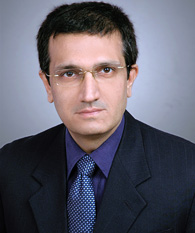Microneedling Treatment for Acne Scars
is Microneedling invasive procedure for skin ? You’ll likely become discouraged if you begin your investigation into microneedling with an image search on Google or Instagram. Because the treatment entails puncturing the skin with tiny needles that take blood, the photos are unsettling. Although it may not seem like a smart idea to stick a bunch of needles in your face, many individuals are raving about the rejuvenating effect that the procedure causes.
What is microneedling?
Microneedling is considered to be a therapy using small needles. This is one such cosmetic procedure which does not cause much pain. In this, a roller with very fine needles is moved on the face, which makes small cuts on the skin. These holes signal the skin to make collagen, collagen is a protein that keeps the skin tight and young.
This reduces wrinkles and scars, and the skin looks tighter. There may be some redness for a few days after microneedling, so it is important that you consult a doctor to see if this is right for you.
How effective is microneedling for acne scars?
Microneedling, that tiny needle therapy, is really good for acne scars. These needle pricks create controlled injuries in the skin as the body produces more collagen. This collagen is that thing which reduces scars. But microneedling is not enough for deep scars. You need multiple sessions for good results, but you can still get some marks. Consulting a dermatologist is the best way to decide whether microneedling treatment is right for you.
What are the results and risks of microneediling?
Here we are briefing the associated benefits and risks of microneediling.
Benefits:
- Reduces wrinkles.
- Brings a glow to the face.
- Reduces scars and marks.
- Minimizes large pores.
Risk:
- Slight burning or stinging
- Redness for a few days
- Risk of infection if sterilization is not done properly
- Sometimes bleeding or bruising bleeding or injury – occasional bleeding or bruising)
If you are thinking of getting microneedling done, consult a doctor first. Dr. Navin Taneja (dermatologist) director of the thenationalskincentre specialist in scar revision. He will tell you whether it is beneficial for you or not after looking at your skin type (if you are thinking of getting microneedling done, first consult a doctor. He will tell you after looking at your skin type whether it is beneficial for you or not – If you’re considering microneedling, consult a doctor first. They will assess your skin type and advise if it’s suitable for you).
What to expect after getting microneediling?
- First of all, your face will turn a little red, as if you have been sun burnt. This redness should subside within 48 hours.
- There may also be swelling, but that too will subside within 48 hours.
- After this, the skin of the face may feel a little tight and dry for 3-5 days. Keep applying moisturizer during this time.
- Some people may also have mild itching or burning, but it is not very serious.
- Sometimes mild rashes also appear on the face, but these also go away in a few days.
There is no need to worry about all these things. All this is a part of microneedling. Actually, these needles make small holes in the face, due to which the body starts the process of healing the wound, and this increases collagen production. This reduces wrinkles and makes the skin tight.
Keep in mind that do not wash the face for at least 4 hours after microneedling. You can apply a cold compress to reduce swelling. Apart from this, follow the doctor’s advice and do not forget to apply sunscreen. Although you can apply makeup from the next day, if possible, give your face a rest.
Conclusion
So, microneedling can be a great way to reduce the scars on your face. But it is only effective if done correctly. Doing it yourself at home carries the risk of infection and the results will not be as good.
It would be better to go to a good skin care specialist. He will decide whether microneedling is right for you or not and which needles should be used after looking at your skin type.

